
Discover La Alhambra with Seda Club’s Exclusive Package for Two
Seda Club invites guests to discover the historical richness and architectural beauty of La Alhambra through an exclusive package for two. This special package is
You can book our services by phone at +34 858 16 01 61 or through our e-mail recepcion@sedaclubhotel.com
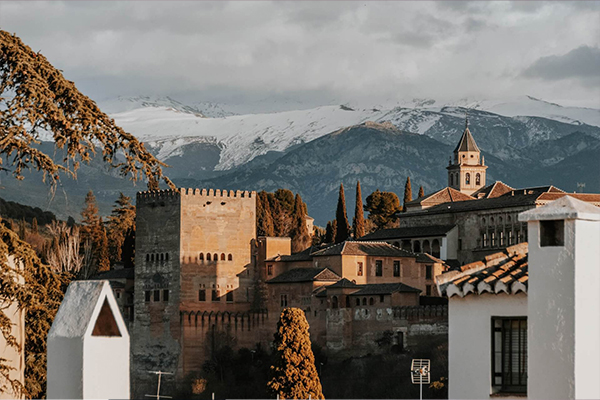
Granada is a city that captivates the senses. The sight, with impressive monuments such as the Alhambra, the Cathedral or the landscapes contemplated from the viewpoint of San Nicolas. The sense of smell, with the jasmine-scented streets of the Albaicín neighborhood. The ear, with the flamenco zambras of Sacromonte. Its history through the touch of the millenary stones and the taste with its gastronomy and its tapas. City of kings, Granada is much more than what can be told.
Next to the capital and forming part of the region of Granada is a string of towns linked by its history to the city of the Alhambra. Towns that share its rich heritage and arise in an environment characterized by green strips of poplar groves and well-kept orchards. Some municipalities in the belt of the capital have marked milestones in history and universal culture: in Santa Fe, a town created by the Catholic Monarchs to besiege Granada, was where the Capitulations for the discovery of America by Christopher Columbus were signed; and Fuente Vaqueros saw the birth of Federico García Lorca, one of the most important poets and playwrights of Spanish literature.
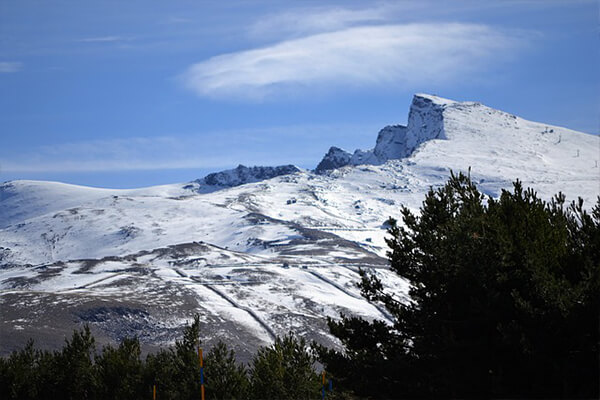
The Sierra Nevada National Park is home to the highest peaks of the Iberian Peninsula, the Mulhacen (3,482 m.) and Veleta (3,394 m.). Two real challenges if you like hiking. In summer, when there is less snow and weather conditions are more favorable, there are two mechanical systems that will facilitate access to the three thousand level to, from there, walk up to the peaks: the High Peaks Interpretation Service (both from the North and South slopes) and the ski lifts of the ski resort.
The Sierra Nevada region borders the Alpujarra and the Marquesado del Zenete. The Sierra Nevada National Park is home to the highest peaks of the Iberian Peninsula. From the heights of the Veleta and Mulhacen peaks you can see the Mediterranean Sea. Sierra Nevada is a natural alpine paradise in the heart of Andalusia. With mild summers and cold winters. Among its snowy peaks, rivers and forests we find charming villages, straddling the monumental city of Granada and the imposing massif of Sierra Nevada.
Villages immersed in the natural environment, preserving all the flavor of tradition, in them you can breathe the silence. Ideal places to enjoy the tranquility and rest. Many of these villages date back to Islamic farms dependent on the capital, dedicated to agriculture and silk production. The Muslim footprint can be seen in the network of irrigation channels that collect the meltwater from the peaks of the Sierra Nevada to take them to the Vega.
Because of its native flora and fauna, Sierra Nevada was declared a Biosphere Reserve, later a Natural Park and finally a National Park. It is home to one of the best ski resorts in Europe.

The Alpujarra is located between the Sierra Nevada, the Sierra de Lújar and the Sierra de Gádor, opening to the Mediterranean from the Mulhacén, the highest peak of the Iberian Peninsula. Of abrupt and colorful landscape, its orography is furrowed of ravines, gorges and valleys, where rest, and sometimes climb, the peoples of this region.
Inhabited by Phoenicians and Romans, it was the eight centuries of Arab domination that gave it its stepped architecture, its irrigation system, its gastronomy and even its name. Isolated and difficult to access for centuries, this rugged territory has remained almost virgin, as if time had stopped in the Alpujarra. The villages of the Alpujarra, with their whitewashed houses, spill down the slopes among the green of the forests.
The beauty of these villages is only one of their many attractions. Lanjarón, a spa town famous for the longevity and good health of its inhabitants, is the gateway to the wonders of the Alpujarra. Trevélez, the highest municipality in Europe, is known above all for its exquisite hams. Another major tourist destination is the Poqueira ravine, where the villages of Pampaneira, Bubión and Capileira are located. It is said that this is an area of goblins and witches, as well as the smell of olive trees and trout with ham.
The Guadalfeo river splits the Alpujarra longitudinally in two, giving rise to the Alpujarra Alta and Alpujarra Baja. The High Alpujarra falls in the southern part of the Sierra Nevada where you can find beautiful villages such as Bérchules, Busquístar, Bubión, Juviles or Yegen. The Lower Alpujarra is constituted by La Contraviesa, where we find peculiar villages such as Lújar, Sorvilán and Albondón among others.
Villages that with their charm have amazed locals and strangers alike. Pedro Antonio de Alarcón dedicated the first travel book in Spanish to them and Gerald Brenan sang of their excellences in Al sur de Granada. For Federico García Lorca it was "the country of nowhere". The dance, the dance and the songs constitute an important part of a rich folklore and an ancestral tradition. The Moors and Christians festivities are celebrated in a good number of towns, but one of the most original manifestations of the region are the trovos alpujarreños. In them, two troubadours sing in turns improvising on the fly the replica of what the other has sung.
Next to the Alpujarra is the fertile Lecrín Valley where the orange and lemon groves perfume the air in spring with a heady scent of orange blossom. Ancient flour mills, Muslim castles and charming farmhouses dot this quiet and luminous region.
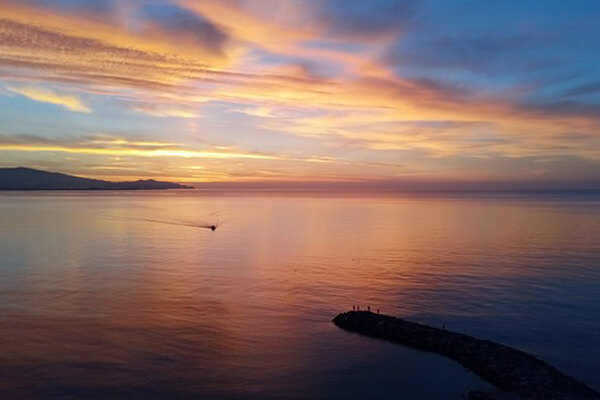
Dozens of beaches and small coves with crystal clear waters. 320 days of sunshine a year. And an average annual temperature of 20 degrees. These are the credentials of the Costa Tropical, the 73 kilometers of coastline of the province of Granada. Its name is due to the exceptional good climate during all seasons of the year, which allowed it two centuries ago to become the only place in Europe where tropical fruits such as mango, custard apple and avocado are grown. Names that evoke exotic flavors and places and that, nevertheless, are typical of one of the most privileged corners of Andalusia, the Costa Tropical.
Nineteen municipalities make up the tropical coast. Founded by the Phoenicians about a thousand years before Christ with the name of Sexi, Almuñécar is a place full of history that preserves the remains of a Roman salted fish factory, five stretches of aqueduct and an Arab castle. This tourist center hosts a magnificent jazz festival in summer.
Motril is the largest town in the province after Granada. Among its monuments are the Iglesia Mayor de la Encarnación and the Sanctuary of Nuestra Señora de la Cabeza, built on the former pleasure palace of Queen Aixa, mother of Boabdil, the last monarch of the Nasrid dynasty.
Salobreña becomes in the visitor's imagination a great mountain of sugar lumps. Its small white and cubic houses swirl in front of the sea around a hill crowned by a monumental Moorish castle. From the top you can contemplate, in a single glance, delicious panoramic views over the Sierra Nevada, the Mediterranean and a fertile fertile plain.
Next to the beaches of these towns there are small and quiet coves located in Albuñol, Castell de Ferro-Gualchos and La Mamola-Polopos. Nearby are the municipalities of Albondón, Ítrabo, Jete, Lentejí, Los Guájares, Lújar, Molvízar, Murtas, Otívar, Rubite, Sorvilán, Turón and Vélez de Benaudalla, surrounded by exuberant nature.
In addition to sea and culture, the Costa Tropical offers endless possibilities, such as golf, paragliding, hiking in the inland villages, scuba diving in the rich seabed of Cerro Gordo and water sports, which have their center in the marina of Marina del Este (Almuñécar) and the Club Náutico de Motril.
The tropical fruits can be tasted in salad or as dessert, in a meal in which rock fish such as snapper and bream and seafood such as shrimp are not to be missed. And with coffee, cane rum, which is also produced on the tropical coast.
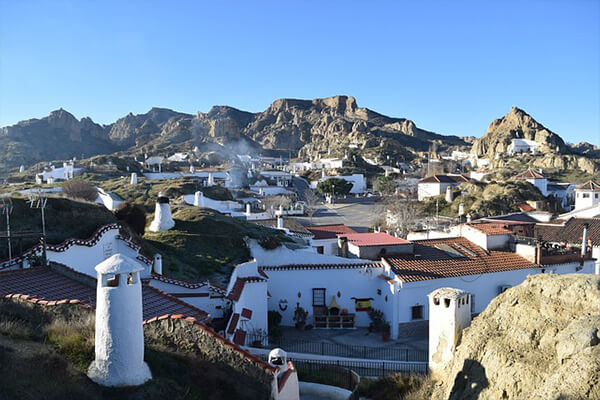
The region of Guadix and El Marquesado, formed by an immense high plateau that forms part of the Geopark of Granada, is located to the east of Granada. Composed of the town of Guadix and the surrounding villages, this area enjoys a rich archaeological and historical legacy. A landscape of contrasts between the slopes that prelude the Sierra Nevada and the arid lunar landscape of the Eastern Mountains. Between the reddish tones of the Hoya de Guadix and the green valleys of the rivers that bathe the region.
Crossroads since ancient times, we find in its territory dolmens, Iberian remains and the Roman city of Acci (Guadix) founded by Julius Caesar. In the VIII century the Muslims arrived and although they were expelled eight centuries later, the Islamic heritage still remains in the Mudejar churches, in the farming techniques and in the Arab place names. From the Christian era, the cathedral of Guadix and the Castle of La Calahorra, which houses one of the most beautiful Renaissance palaces in Spain, stand out.
The land where the Hoya de Guadix and the valleys of the Fardes and Gor rivers are located is easily excavated. This geological characteristic has given rise to a peculiar type of habitat: cave houses. Being dug into the ground, they achieve a thermal insulation that keeps the temperature constant throughout the year. Warm in winter and cool in summer, rustic and cozy, their whitewashed walls and the simplicity of the forms make everyone who chooses them as tourist accommodation fall in love with them.
Its millenary craftsmanship has survived thanks to its revaluation as artistic work. It has a very characteristic pottery, with native forms such as the pitcher, the accitana jug or the torico of Guadix. Esparto, ashlar, wicker or iron forging are other arts that are made in this region. Of rich folklore, Guadix and El Marquesado has festivals, pilgrimages, traditions and curious characters of the popular imagery as the Cascamorras of Guadix and Baza.
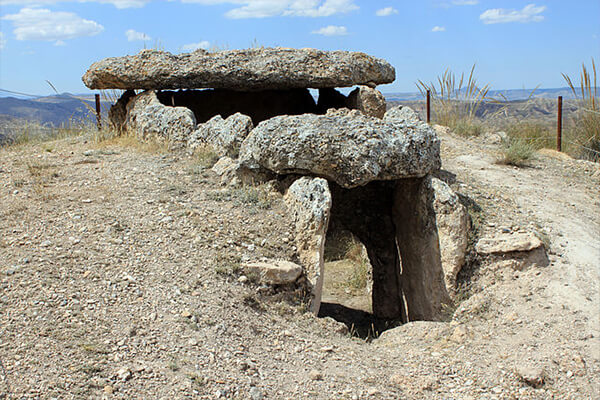
The main attraction of this small town are its 240 Neolithic dolmens scattered in 10 necropolis, which make it the largest concentration of prehistoric burial mounds in Spain. The reason for this abundance is that the stream of Gor is a natural depression located in a very busy geographical corridor during Prehistory, border between the Levantine tribal groups and those of lower Andalusia that occupied this area in the 5th millennium BC.
The Neolithic populations that settled here formed a complex, hierarchical society with an agro-pastoral economy. They lived in houses dug into the hillsides or in stone constructions with roofs of branches and buried their dead inside dolmens.
Gorafe is currently working on the creation of a megalithic theme park, which already has several itineraries to visit these dolmens, and has opened an interpretation center for visitors.
The municipality has numerous cave houses bequeathed by the Almohad settlement of Los Algarves, from the 12th century. In addition, part of the population lives in caves. It is an ideal place for archaeology, cultural and rural tourism enthusiasts. In its surroundings you can practice hiking and cycling routes, within a landscape composed of a canyon with a multitude of gullies and ravines. In the town center, visitors can contemplate and purchase the handicrafts that are made in Gorafe with esparto grass and olive wood.
ANOTHER WAY OF UNDERSTANDING GREAT LUXURY AWAITS YOU IN GRANADA
Seda Club Hotel is located in the historic center of Granada, in the Plaza de la Trinidad, a landscaped square dating from 1893 that develops around an elegant baroque fountain made of stone and marble. The square is a wonderful oasis of peace and tranquility just a step away from the city’s Cathedral. This exclusive location gives our guests the opportunity to enjoy Granada as a local, surrounded by history and, at the same time, experiencing the vibrant rhythm of a truly authentic city.
Each of our proposals is an experience that goes beyond a stay in Granada.
Hidden Plans is our way of showing you, not only what you will find in our establishments, but also outside of them. The corners that you must visit, the points of cultural and patrimonial interest and,
of course, our favorite places frequented by the local public who also know the secret art of living.

Seda Club invites guests to discover the historical richness and architectural beauty of La Alhambra through an exclusive package for two. This special package is

The prestigious Hidden Away Hotels chain has achieved an extraordinary milestone by being awarded the MICHELIN Key at three of its properties: Gran Hotel Inglés
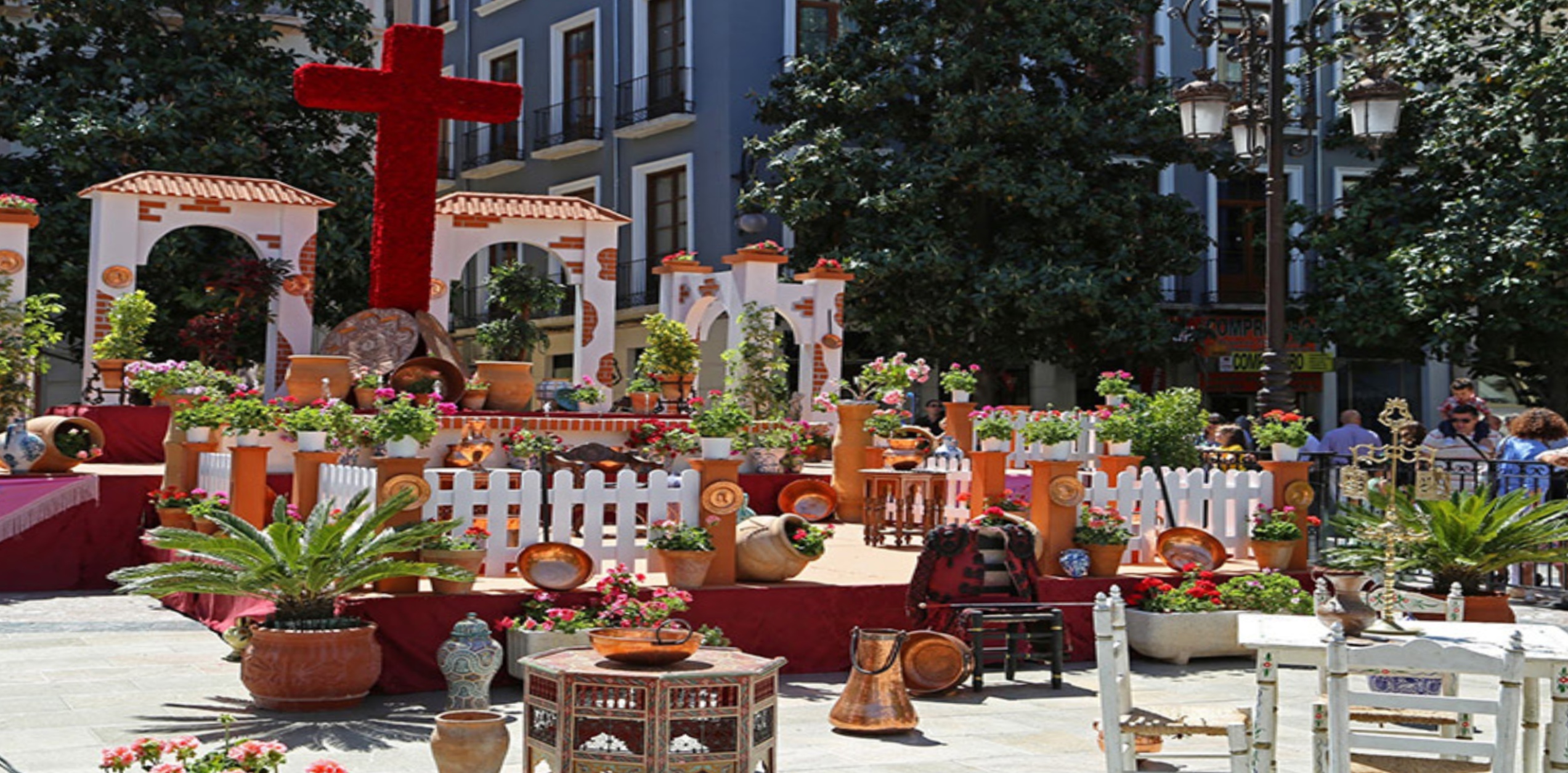
Since the 17th century, Granada has celebrated the May Crosses, an event that adorns the city with elaborately decorated crosses every May 3rd. This tradition,

Granada, the city of a thousand secrets and charms, is a treasure trove of history and beauty that holds surprises at every turn. Among its
Book now
On 25 and 31 December only the Christmas Dream and New Year’s Eve Gala menus will be available and there will be no à la carte service.